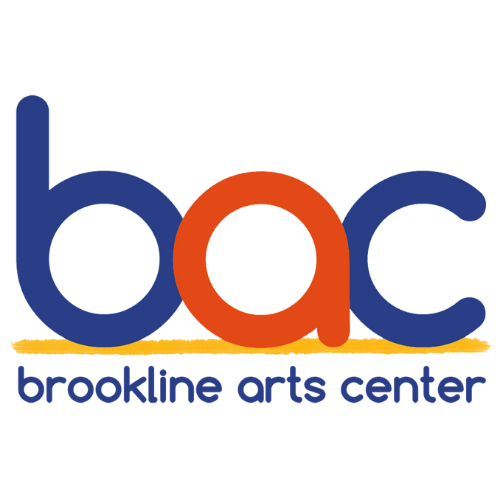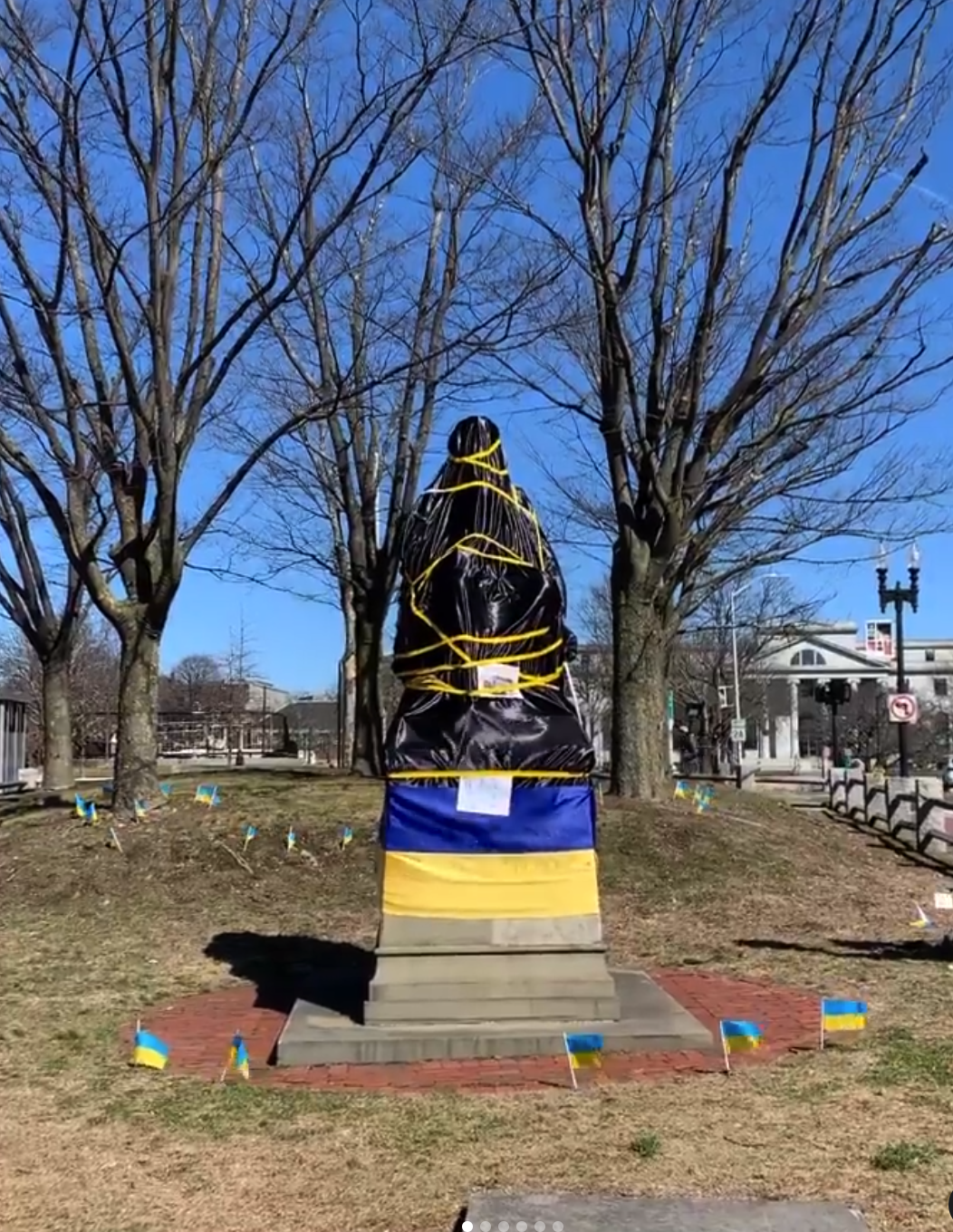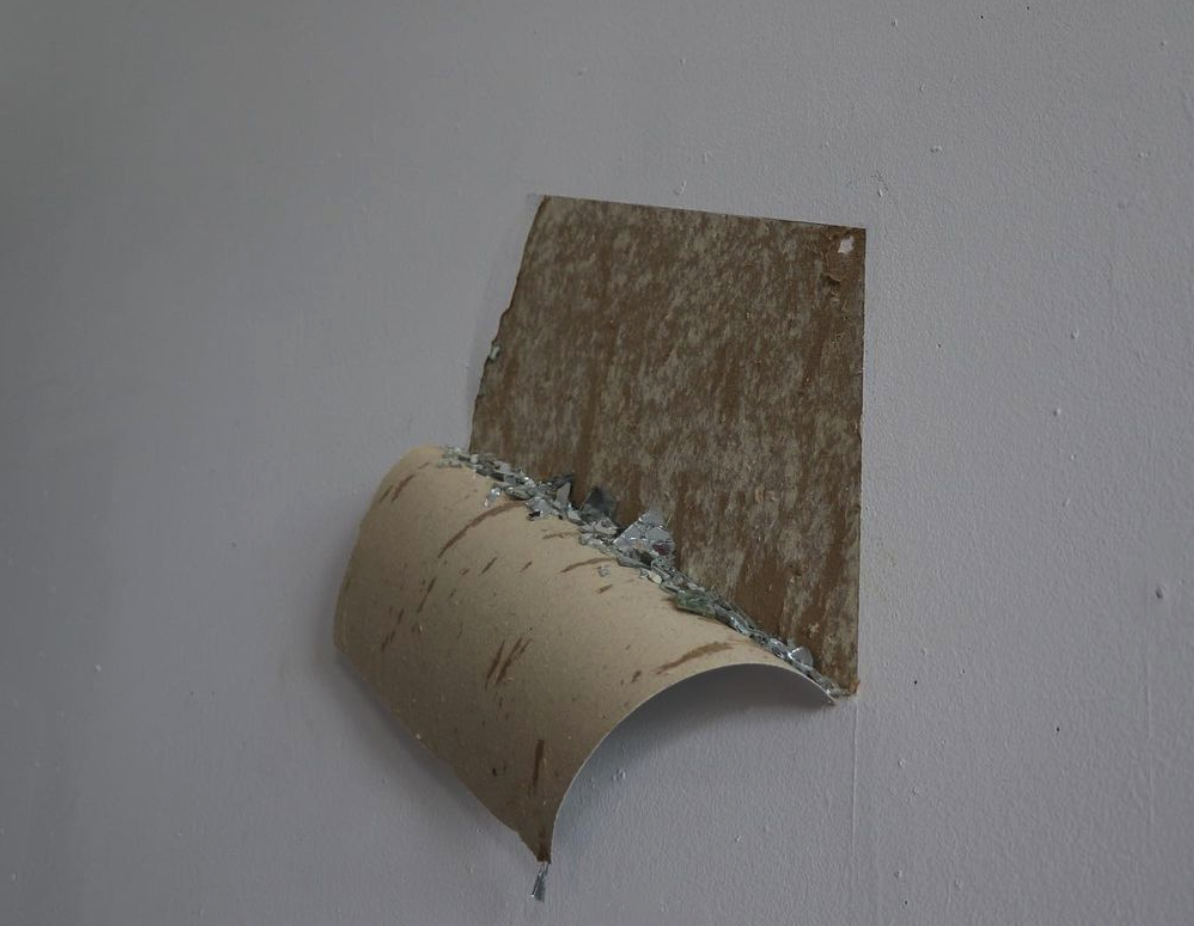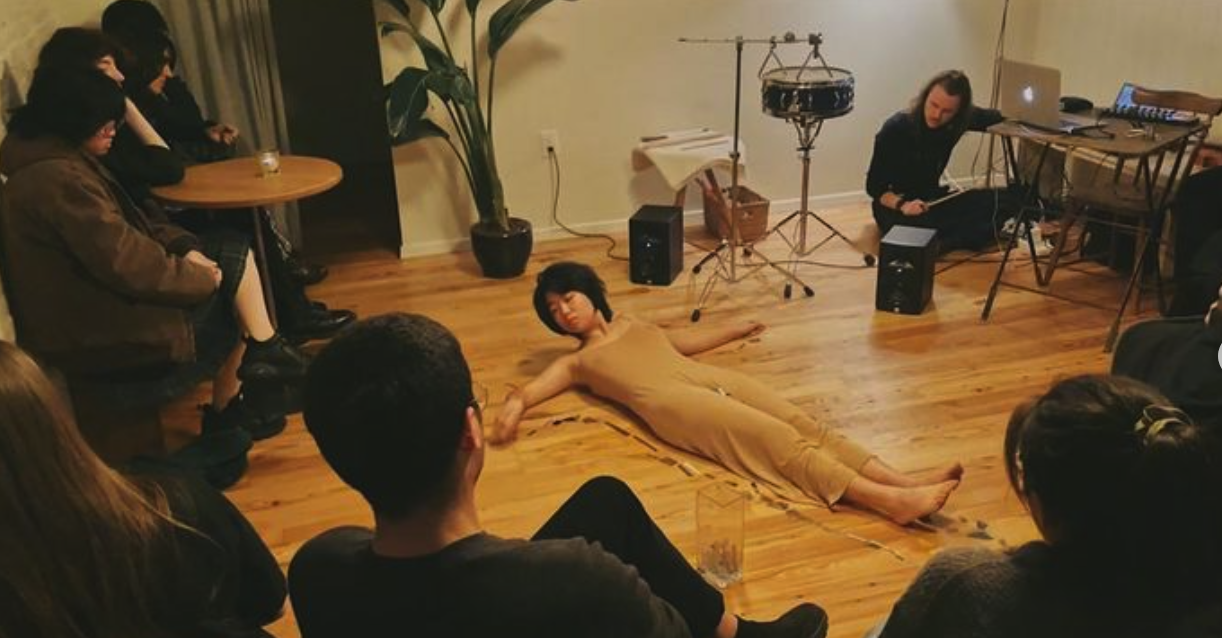Yolanda He Yang
2023 Public Art Artist Feature
-
Yolanda He Yang is a Boston-based multimedia artist whose practice encompasses both personal studio work, performance art, and public art.
Through her explorations in body movement performance and three-dimensional works, Yolanda delves into the hidden layers of emotional experience, offering poetic presentations that invite the viewer to experience space beyond its surface appearance - the total rupture of the boundaries imposed between inside and outside, space and time. Drawing from her extensive background in meditation practice, Yolanda's studio work focuses on exposing the factual realities of change that often go unnoticed. Her pieces often convey a mournful beauty, speaking to the process of healing and the embrace of vulnerabilities. Using humble everyday materials, she skillfully reframes details and moments of everyday experience, offering new perspectives and insights.
In her public art work, Yolanda seeks to engage communities through civic projects. By responding to site conditions and the realities of our contemporary world, she creates urban artwork installations that explore concepts of beauty, equity, and communication. Her practice aims to nurture sensibilities of feelings, awakening people's awareness of interconnectedness. Examples of her recent public artwork include Winter Optics - Sculptures with Lights at The Rose Kennedy Greenway recommended by Boston Globe Tickets, Blank Paper - Public Art Demonstration in Responding to "Black Paper" Movement in China covered by WBUR, and Napalm Test #1, which was featured on The Harvard Crimson.
Yolanda is also the initiator and caretaker of "Behind VA Shadows" - a community-based project that highlights working artists in art museums.
Through her multifaceted practice, Yolanda continues to push boundaries and explore new ways of engaging with art and the world around us.
Yolanda, could you provide us with an overview of your general art practice and what inspires your work, both in the public art realm and within the studio?
I often conceptualize my art as punctuation in time, marked by a poignant and poetic gesture within a given space. Whether situated in the public art realm or within the confines of a studio, my pieces consistently delve into the intricacies of surface depth. I explore how surfaces intersect, align with one another, and evoke a presence within the absence.
In my public art practice, I seek to connect with communities through civic projects. These projects respond to the site's specific conditions and the realities of our contemporary world. My urban art installations collaborate with natural elements, fostering a dialogue between art and the environment. The overarching goal of my work is to cultivate an appreciation for emotions and sensitivities, awakening people's awareness of the interconnectedness that exists within our shared spaces.
Could you tell us more about the core concept behind your "from here and now to Napalm Test #1" public art project and what it aims to promote?
For this specific public art installation at BAC, I aim to unveil the surface of Napalm's history through strategically positioned, orientation-driven text. The arrangement of these words directs attention to the location of Ohiri Field, where the first Napalm Test occurred on July 4th, 1942. This historical fact, however, remains a selective memory for many, as it is tied not only to the purpose of its invention but also to the trauma that Napalm inflicted on multiple generations, serving as one of the most destructive weapons in World War II.
The critical decision lies in how this public art piece is situated within the landscape, emphasizing the intentional gesture of bringing this historical revelation to the forefront. The positioning of the artwork serves as a deliberate act. It sheds light on a painful but crucial part of our collective history.
What are some of your biggest considerations with this project?
The orientation and subtle tracing of letter shapes after a snowfall connects two locations: Ohiri Field and BAC, bridging the gap in time and space from 1942 to 2023. The invisible line between these two points is visually manifested by placing the installation to guide viewers' gaze toward Ohiri Field in Lower Allston. This intentional positioning allows individuals to engage with the counter-memory of "from here and now to Napalm Test #1" by aligning their bodies with the historical context. This highlighted awareness of the body’s orientation comes from my practice in body movement as a performer.
Considering the New England Winter setting, the decision on materials becomes crucial for the trace left in the snow. The porous positive space, crafted by hand-weaving telephone wires, serves as the surface for each letter. The hollowed negative space forms the letters within these weaved surfaces, inviting the falling snow to touch the ground directly. The positive space, in contrast, slows down the snow's descent, creating a dynamic interplay between the material and nature.
As the snow accumulates, it transforms into a canvas, casting the letters "from here and now to Napalm Test #1" through the hollow spaces. The accumulation of snow becomes a temporal record, capturing the essence of the installation and the passage of time, reinforcing the emotional and historical resonance of the work. The ephemeral quality of this collaboration with nature is something very consistent in my practice when I think of memories.
Community participation and design are key aspects of your project. How do you plan to involve the community in the development of the "from here and now to Napalm Test #1," and what benefits do you foresee from this approach?
Three workshops will take place at BAC; each workshop's content includes hands-on making and discussion. I am interested in absorbing thoughts from people, especially kids and teenagers. They have the most fantastic and visionary view of the world. I am very excited to build the prototype of making all those letters, take them outside, and decide the orientation of this installation. I am curious how they would interpret the spatiality between Ohiri Field and BAC, 1942 to 2023. Their perspectives promise to infuse the project with fresh ideas and enrich the overall narrative.
You mentioned that you view your art as a form of "punctuation in time." Could you delve deeper into this concept and how it influences your creative process?
Describing my work in a poetic and tender manner captures its essence and reflects the ideology that shapes my perception of the world. The notion of "punctuation in time" takes on a more literal meaning, emphasizing a belief in the inevitability of change. I see this inevitability as an optimistic opportunity for change. Departing from a long-standing reliance on metaphors as my medium, I explore the delicate balance between allowing oneself to evolve and embracing moments of constancy, navigating the paradox of simultaneous change and continuity.
Art becomes the medium through which we freeze these pivotal moments in time, a tangible record of our ability to transform and endure. I see life as an endless sentence, continually unfolding to reveal our true selves. This parallels the evolution of my artistic practice, illustrating the dynamic relationship between the world, myself, and the nuanced interplay between the collective "I" and the individual self.
The vast space in between serves as a canvas for exploration, evoking feelings of excitement, motivation, and inspiration. The punctuations are the metaphors employed in my work, acting as the words in the sentence of life. Each piece becomes an archive of awareness, capturing the nuances of the evolving self and the ever-shifting dynamics with the external world. The result is a poetic manifestation of the intricate dialogue between self-discovery and the broader, boundless expanse of existence.
Your public art piece, "from here and now to Napalm Test #1," explores the history of Napalm. How do you approach revealing this history through art and text, and what questions or themes do you aim to address in this specific project?
Our brains automatically skim through text wherever we go, but they don't inherently absorb or interpret it. In this project, text serves as the initial layer, describing facts and bridging the temporal and spatial gap to the historical event known as "Napalm Test #1." The words convey information and anchor us to the distance, both in time and space, of that significant moment.
The second layer involves orientation, requiring viewers to align their bodies with their natural reading habits. This moment of alignment extends beyond physical positioning.
In contrast to a sign designed by Maria Salim and Ross Miller, which was placed on a utility pole near Ohiri Field, "From here and now to Napalm Test #1" focuses on orienting viewers' awareness to the specific site of the first Napalm test. It prompts questions like "What is Napalm?" and "What is Napalm Test #1?" The ground-level, orientation-driven text invites viewers to discover the history themselves, bringing this historical fact to the forefront through its presentation.
Can you elaborate on how your background in Theology and Community Chaplaincy informs your approach into art and community well-being?
I wouldn’t say I have a “background” in Theology and Community Chaplaincy because I am not a theologian or on the Chaplaincy track. It’s more about holding another perspective to learn about individuals, communities, and societies. Studying with a group of people who see themselves as “listeners” in their own social work fields, it becomes promising that general well-being is possible for us to care for - it stems from our daily activities in the community. So I think about my art practice as a patient listening session with a tender awareness. How to hold a space for the past so we can be more present, how to keep hope when we have to mourn at the moment with others, and how to bring the awareness that sometimes is painful through art, all those thoughts are counted in a large amount of thinking process when I think and make and communicate as an artist.
Your involvement in the "Behind VA Shadows Project" is intriguing. Can you share more about the project, its goals, and how it relates to your broader artistic endeavors?
Community building through public art is one of my motivations for making art and collaborating. I see Behind VA Shadows as a support group instead of an organization, even if it has been growing fast and steadily with all the care from the community, specifically with working artists in the museum galleries.
We have had a physical art space for this project in Harvard Square since June 2023. It was definitely my honor to get this commission from Denise Jillson, the executive director of HSBA and Intercontinental Management. But Behind VA Shadows started much earlier. It started in December 2021 when I was working at the ICA as a Visitor Assistant. With a group of VA friends, whom I am still very close with, such as Shahin Ismail-Beigi, Patrick Brennan, Denver Nuckolls, José Cortez, Nemo Xu, Samantha Joyce, Katelyn Leird, L Scully, we initiated this art project/discussion about caring for the museum workers together. Because this care for people who work in this field is so much needed, Behind VA Shadows extends to their presence among staff in deCordova Sculpture Park & Museum, MIT List Visual Arts Center, MIT Museum, Peabody Essex Museum, MFA, Boston, Montserrat College of Art Gallery, Harvard Art Museums, Leica Gallery, Boston and beyond.
Seeing how much artists get excited to show their art with other museum colleagues and witnessing the community get connected from different art institutions, I can tell Behind VA Shadows continues their dedication to supporting, showing, and nurturing museum workers through highlighting their practice in art when the burnout is evident because of the institute issues.
In the context of your public art at BAC, how do you envision this piece impacting the local community and contributing to the broader conversation about art, history, and memory?
The presence of "From here and now to Napalm Test #1" in BAC's garden area has already sparked public discourse, creating awareness and offering a selective memory to the Brookline community. This impact, reaching the majority, has made me reflect on my role as an artist and the voices I can contribute to the collective narrative.
While the awareness of counter-memory may not rewrite history or heal trauma, the collective awareness from the community becomes a powerful force, digging deeper into counter-memories with determination. This realization drove me to undertake the project at BAC, where I am part of a team working to unveil this hidden history to the public. Reading Robert M. Neer (Bob), whose work "Napalm: An American Biography" inspired Ross and Maria to create the physical sign for Napalm Test #1, has been a crucial part of this journey.
My introduction to Napalm Test #1 happened through Maria and Ross, who shared the sign they designed for the specific site. This involvement led to conversations, including my desire to perform on Ohiri Field on July 4th, 2022, the 80th year of the first Napalm test. Unfortunately, bureaucratic and logistical challenges hindered the permit for the performance.
The awareness cultivated through these experiences brought me to BAC, where the memorial now stands, aiming to spread awareness to the local community. The impact of awareness intensifies when it is shared publicly. I'm grateful for individuals like Ryan H. Doan-Nguyen, the Harvard Crimson journalist and researcher who interviewed me for his article "Napalm, Birthed in Harvard’s Basement." This serves as evidence of the power and impact of accumulated awareness on a broader scale.
As an artist who is passionate about community building, what are your thoughts on the role of art in healing and fostering connections, especially in challenging or painful moments?
Holding the belief in general well-being in society is my faith as an artist. The inspiration for the art can make an impact on people, such as fostering empathy - the fundamental factor that allows us to envision a place that embraces equity, diversity, and accessibility.
When we stand in painful moments, it is usually very easy to get overwhelmed and stuck in a place where we feel hopeless. But art can foster the community, art can be an agent that connects every single individual who has the same social concerns. How to hold a space for ourselves and others - even if patient listening is the graceful and effective way we can do for others. We call it compassion. I believe art can guide people to respond to trauma and transform from there.
How can readers continue to support you and follow your work?
You can follow me on my Instagram: yolandaheyang_arts, I use it as my archive page (for inspiration and my work) or my website, yolandayanghe.com. Always like to connect with people, so send me an email if you have thoughts to share or want to collaborate. I see collaboration as the most beautifully unpredictable action in art. My email is yolandayanghe@gmail.com



